Key takeaways
– OptaPro’s Possession Value (PV) framework establishes the probability of a team scoring from an individual possession.
– The framework assigns credit to individual players based on positive and negative contributions, covering key on-the-ball events.
– Ryan Fraser stands out for the value added from crossing.
– Raheem Sterling’s progression beyond his goal return can be quantified through the framework.
Last month we introduced our new Possession Value framework, which can help clubs assess the on-the-ball qualities of any player on the pitch beyond the measure of traditional statistics. To further showcase the value of this framework, we’ll explore additional ways it can be applied in order to improve player recruitment.
Player types
In the last blog we looked at the positive and negative contributions players make. This already gave some very valuable insights. Most notably, it gave us the ability to quantify if the risk players took with their actions (resulting in negative contributions) was compensated by the rewards those actions yielded (the positive contributions).
However, looking only at positive and negative contributions can give the potentially misleading impression that two players are very similar. A good example of this is the comparison between Deulofeu and Iwobi last year. From a total Possession Value perspective, they are practically identical. Both are credited with equal positive and negative contributions. The framework, however, allows us to take a deeper dive into these stats.
For instance, we can look at how these players made their positive contributions. Did they create danger with splitting through balls, from high interceptions or with great dribbles? We can go as granular as we want. If we look at the Deulofeu Vs. Iwobi example, it becomes clear that they achieve their output in quite a different way.
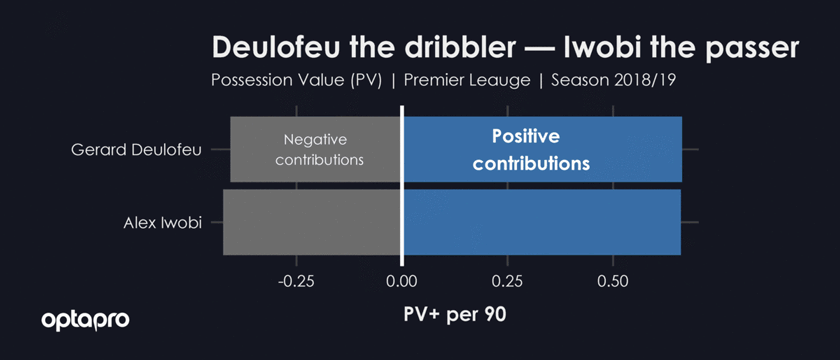
Where Deulofeu adds the most value dribbling, Iwobi is much more reliant on his passing.
Crossing over – looking into other measures of value
By splitting the event type, we can also be much more specific when scouting a certain type of player. For instance, we identify effective crossers by looking for players with the most ‘PV+ by crossing’. This is a big step forward from assessing simple count-statistics, as we are now also able to put a value to those actions. To illustrate this point, we can look at how players perform in both regards:
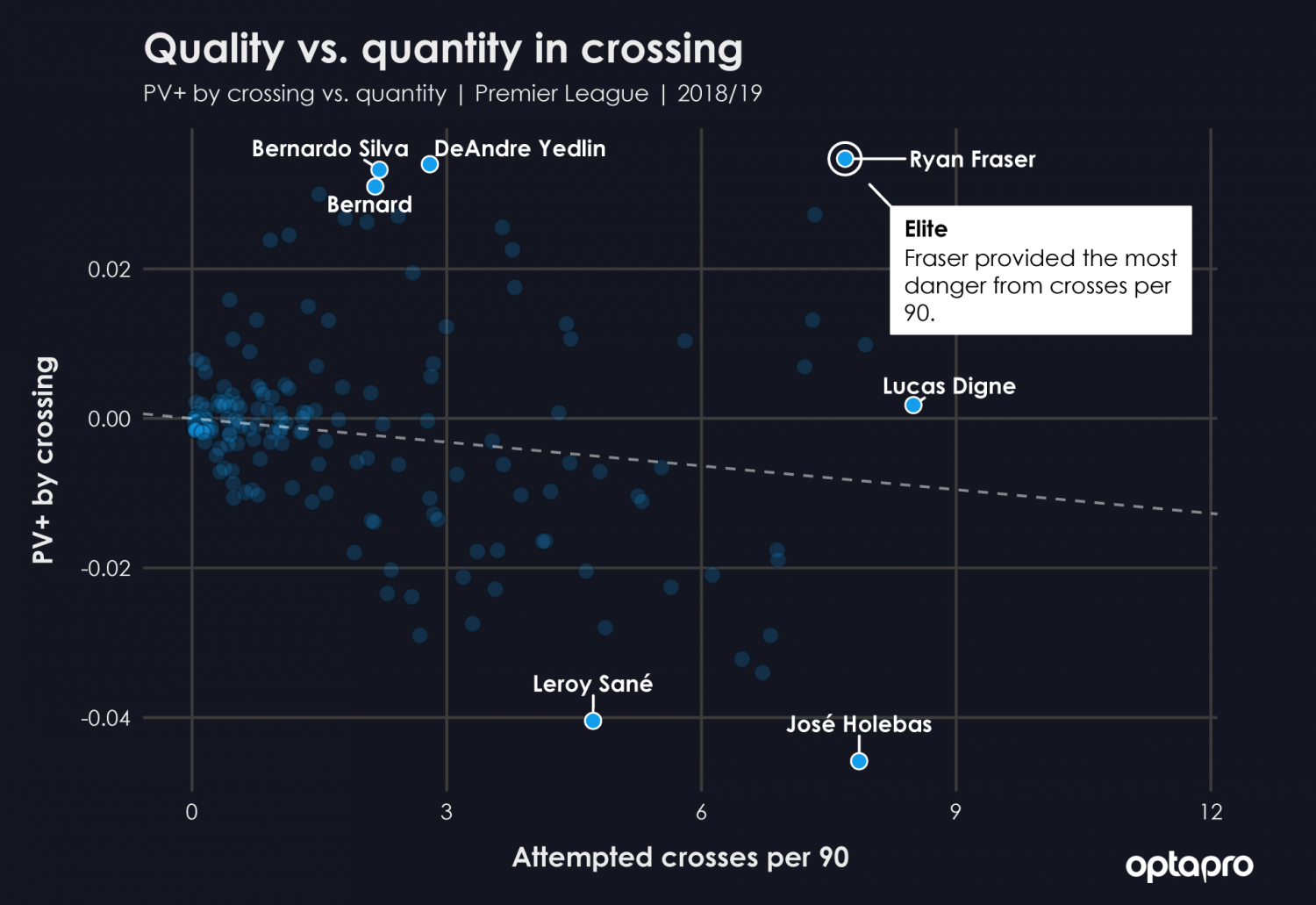
As we can see, providing many crosses does not automatically grant you a good PV+ score. For instance, even though full back Jose Holebas has the third most crosses per 90 minutes of playing times last season, he recorded the lowest PV+ out of any player. On the other hand, more effective crossers like Bernardo Silva and Yedlin rise to the top, as they contributed a very high PV+ with relatively few crosses.
Interestingly, Leroy Sané performs very poorly when looking at crosses. This is backed up by the fact that he only completed five out of 56 crosses last season. This seems like a gap in his skill set, since even including his crosses, Sané had the 4th highest PV+ out of any player in the league last season. Evidently, he more than makes up for his crosses by creating danger in different ways.
Being able to split by the action type gives us much more flexibility when looking for players with certain playing attributes, while simultaneously being able to assess how much value they add with that playing style.
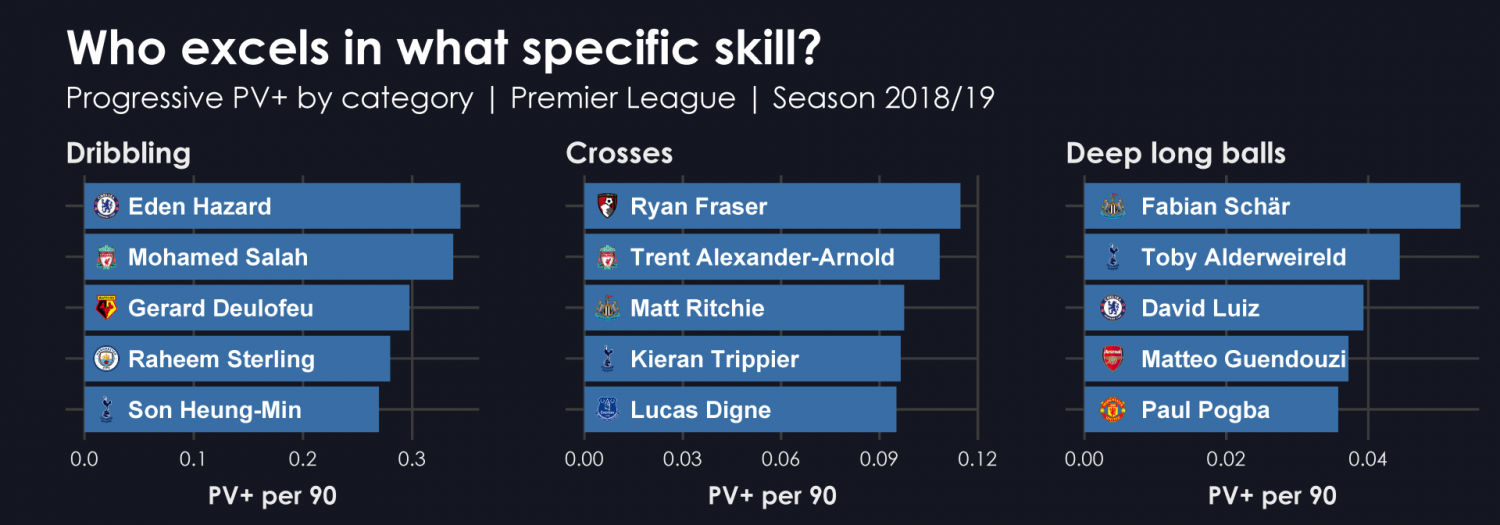
Here we can see the top players in the Premier League for each of these categories. While these lists will seem somewhat obvious, retrieving them from data means we can apply this framework to competitions and teams we’re not as familiar with. This can provide a lot of information about players and teams you might otherwise not have considered (as shown further down in this article).
The increasing value of Sterling
One other way to use this granularity of the framework is to analyse how a player’s playing style has changed over the years and how this affected his value. One example of this is Manchester City’s Raheem Sterling.
When you look at Sterling’s statistical output since his Premier League debut, it’s hard to see how much he has improved as a player. While his goal numbers have improved quite a bit, the same cannot be said when looking at other count statistics.
His number of take-ons has gone down, just like his number of carries, through-balls, crosses, final third entries and even forward passes in the opponent half.
It is only when we look at the Possession Value framework that we see how much Sterling has improved over the last few seasons as a creator as well.
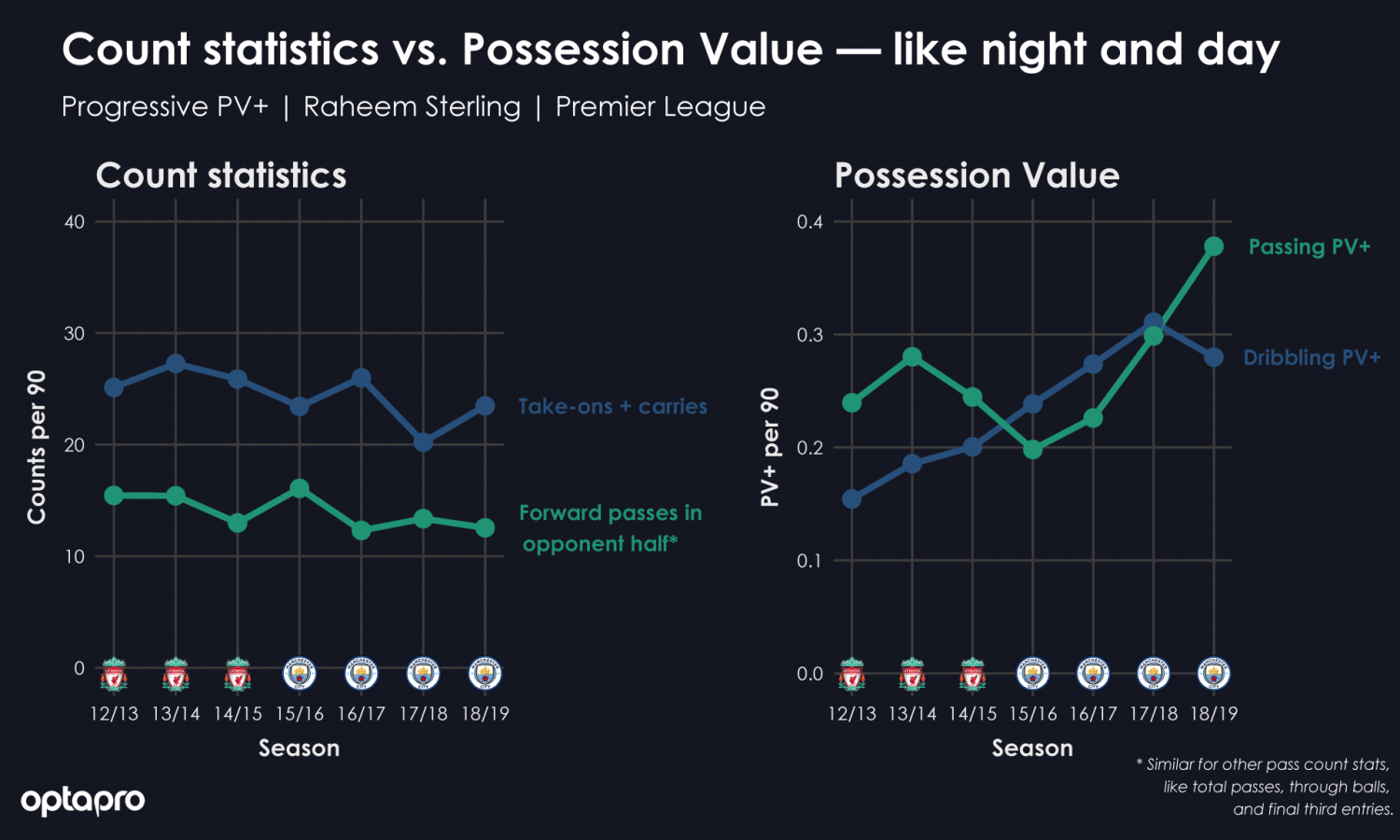
Even though his dribbling numbers have barely moved, Sterling has steadily improved his dribbling for almost every year since his debut. Moreover, his passing PV+ has skyrocketed the last two years, something that is not visible at all when looking at other pass statistics. In combination with his increased goalscoring, this truly paints the full picture of Sterling’s improvement as a player.
Like before, it’s pretty obvious that we don’t need these statistics to show that Sterling has been a good player lately. The real value lies in being able to accurately and objectively assess which players have been good based on the data. This then gives us the ability to assess other competitions and be confident that the data can tell us who is good there as well.
To introduce this, below are the top players from a few selected leagues all around the world.
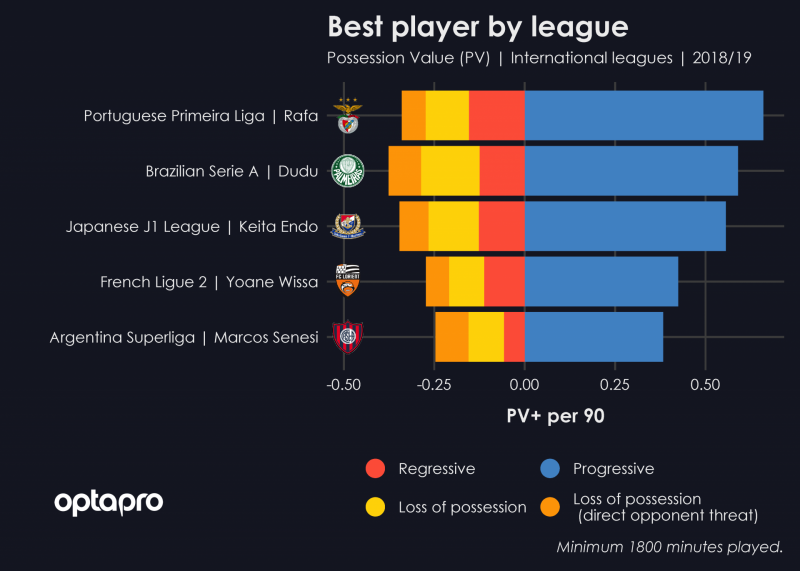
(Note: If we loosen up the ‘minutes played’ criteria we see Andres Iniesta is absolutely tearing up J1-league)
End of the line
While the Possession Value framework can reward and penalise positions all across the pitch in a fairly even manner there is one exception: strikers.
PV+ looks at how players increase the probability of scoring with their actions. Since strikers most often appear at the end of a possession chain, they rarely make such an action. In other words, strikers don’t progress the ball that much, since they are often the final station of an attack. This means that when looking at PV+, such players tend to not do so well.
This is a shame, as making a good run or good positioning is key for a team wanting to create danger. How are good on-the-ball players supposed to make decisive passes, if nobody is making a run they can pass to?
By looking at which players rank highly in PV Received, we can assess who excels at making space to receive the ball in dangerous situations. This is obviously a very valuable skill, and something that was very hard to measure accurately without the PV framework.
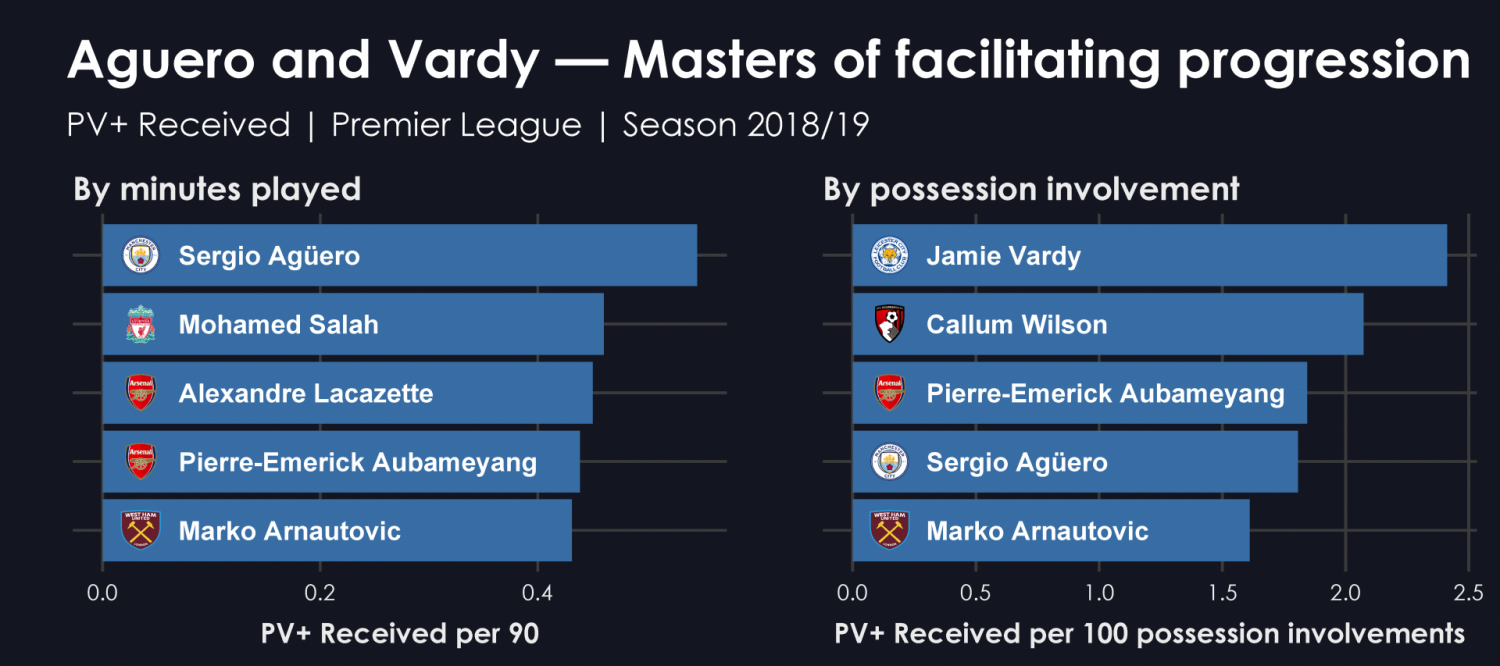
The true power of the framework lies in its versatility. Through the range of applications, different positions and qualities can be objectively assessed. Possession Value can find the answers to many of the questions that have previously remained unanswered.
If you want more information about the framework, please contact us at pro@optasports.com